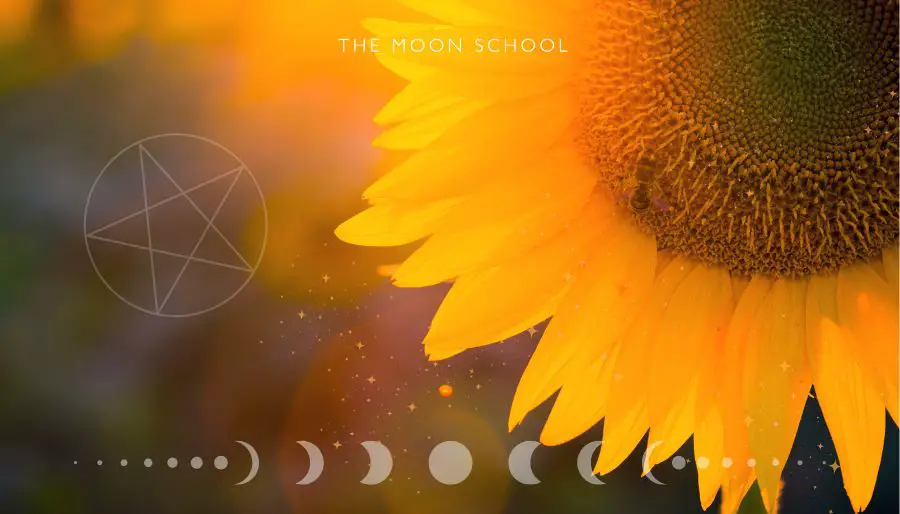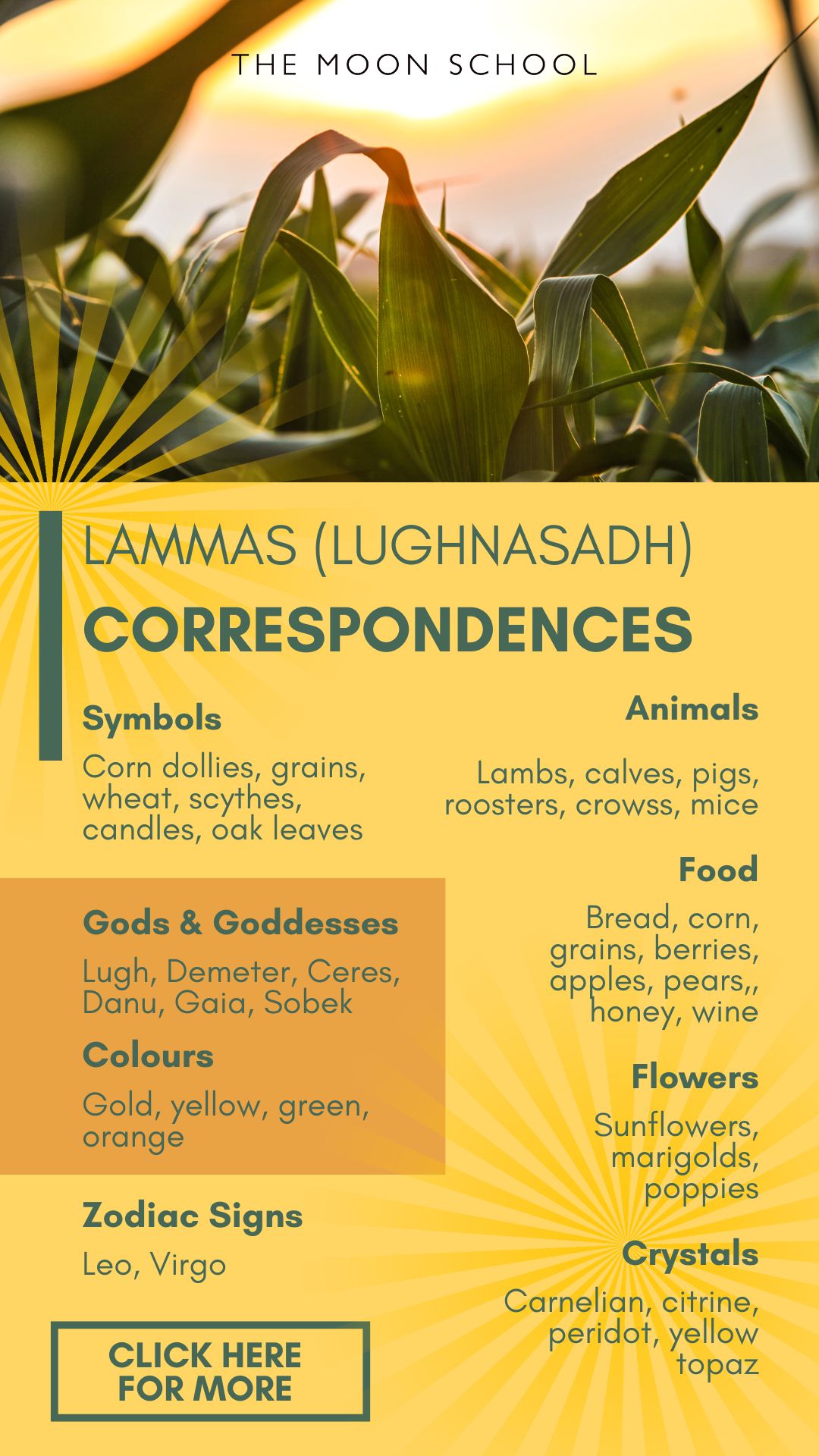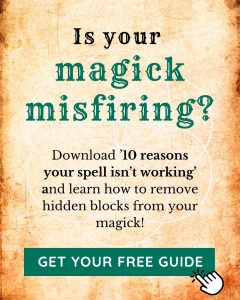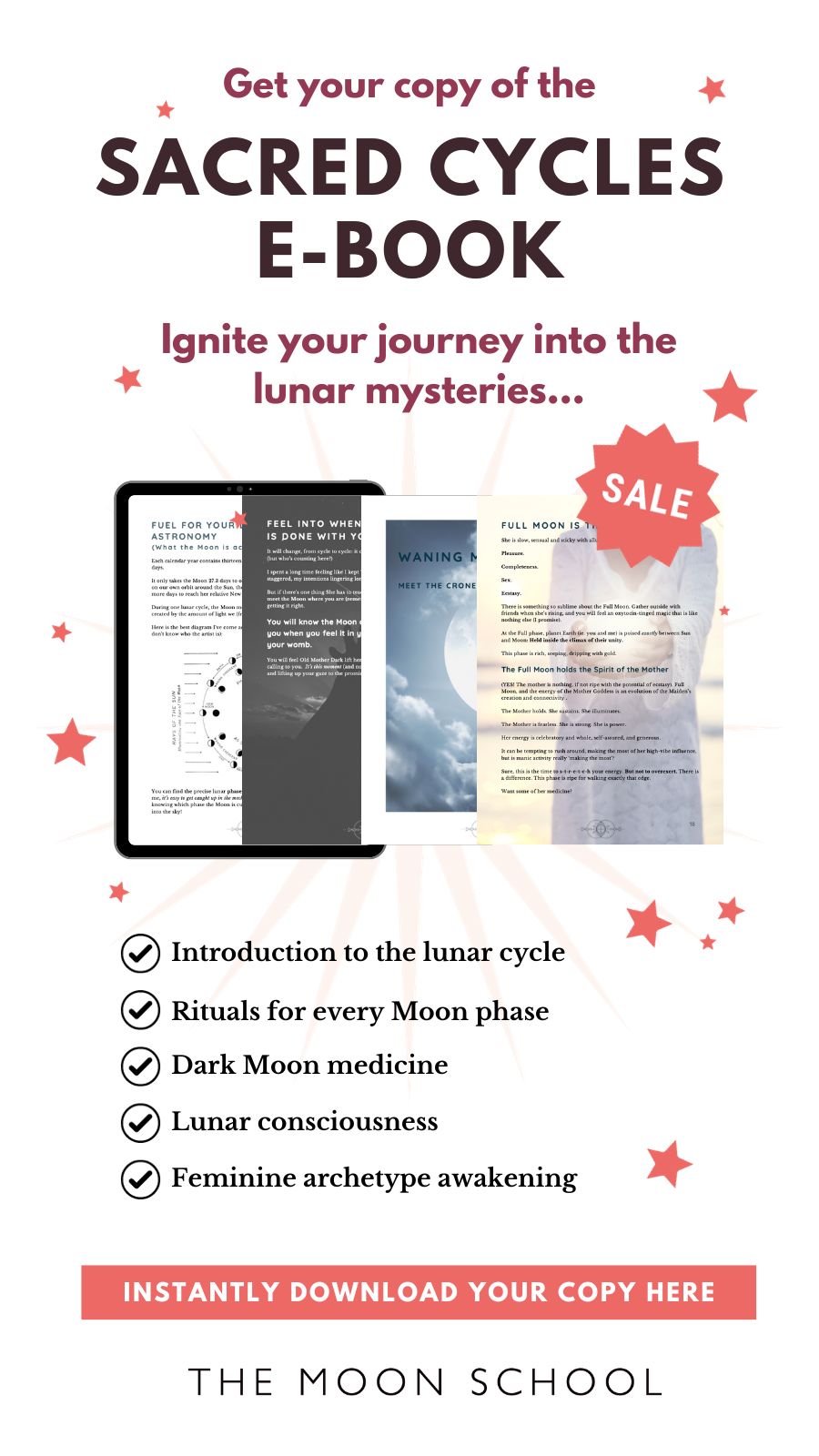Lammas, also known as Lughnasadh, is a beautiful time of the year, traditionally when the abundance of the first harvest is celebrated.
Usually observed on August 1st in the Northern Hemisphere, Lammas is the halfway point between the summer solstice and the autumn equinox.
From baking bread to building a Lammas altar, there are SO many ways to honour this ancient festival in a modern way. So whether you’re a seasoned practitioner or new to the traditions, read on to discover some of the ways to make this celebration unique to you.
What is Lammas?
Lammas is a Gaelic celebration observed on August 1st, that has rich roots in pagan traditions and was later adapted by Christian practices. It’s a celebration deeply tied to the agricultural calendar, marking the start of the harvest season, and the bounty of the late summer season.
Also known as Lughnasadh, Lammas traces back to ancient Celtic and Pagan traditions.
The slightly more modern term “Lammas” comes from the Old English “hlaf-maesse” meaning “loaf mass,” signifying the first loaf made from the new harvest. This explains the corn dolly rituals.
The term Lughnasadh is older and is named after Lugh, the Celtic/ Irish craftsman god.
It’s believed that the first celebrations would’ve involved feasting, games, and sacrifices.
Lammas and the first harvest
Lammas’ primary importance lies in its agricultural significance. This festival marks the beginning of the harvest season, a pivotal time for agrarian communities.
This can be hard to imagine in our modern world, where the same food is available all year round in supermarkets and the internet. But for our ancestors her in the northern hemisphere, it was HUGELY significant.
A successful harvest ensured enough sustenance for the upcoming winter months, and therefore offered a better chance of survival.
At Lammas, farmers would cut the first sheaves of grain, symbolizing hope and provision.
And although these agricultural rituals may hold less meaning today, honouring the harvest at Lammas can help you connect with both the natural world, and your ancestors. This brings focus to the fertility and health of the land, and the well-being of your community.
Lammas Correspondences
When celebrating Lammas, you may want to incorporate some of the symbols, colours, flowers and Gods and Goddesses associated with the festival. (Or you may find that you instinctively include them!)
Take a look as the correspondences below…
Symbols: Corn dollies, grains, wheat, scythes, candles, oak leaves
Animals: Lambs, calves, pigs, roosters, crows, mice
Colours: Gold, yellow, green, orange
Gods and Goddesses: Lugh, Demeter, Ceres, Danu, Gaia, Sobek
Food: Bread, corn, grains, berries, apples, pears, honey, wine
Flowers: Sunflowers, marigolds, poppies
Crystals: Carnelian, citrine, peridot, yellow topaz
Zodiac Signs: Leo, Virgo
Lammas Celebration Ideas
Celebrated on August 1st, Lammas is one of the four cross-quarter fire festivals and marks the beginning of the harvest season. Traditional celebrations include baking loaves of bread, decorating homes and building altars, and participating in folk games and dances that pay homage to the season.
Let’s take a closer look at some of these, plus some more modern Lammas rituals, celebration ideas, crafts and recipes to honour this often forgotten day.
1. Bake a loaf of bread
One of the central Lammas traditions is baking bread. The name “Lammas” itself comes from the Old English “hlaf-maesse” meaning “loaf mass.”
If you can get it, use freshly harvested and ground grain.
As you make your dough, ritualise the act by dedicating your bread to a specific intention, such as health or prosperity. You may also choose to create a ceremonial space around your baking area, incorporating candles and herbs that align with your intention.
Shape your loaf into symbolic forms like sheaves of wheat or sun symbols.
After baking, place your loaf on your Lammas altar, or share in a communal feast to express gratitude. Be sure to offer some to your ancestors.
2. Craft harvest decorations
Decorating your home and altar with harvest elements is another really lovely tradition, especially if you’re getting the kids involved.
Begin with grains, cornhusks, and seasonal fruits like apples and berries.
Incorporate candles with scents of cinnamon, vanilla, or cedarwood to evoke the essence of the season. Add fresh flowers, gathered from fields or gardens, to bring natural beauty indoors.
Arrange these items thoughtfully on your altar, mantlepiece or in your living spaces to create a sanctuary that celebrates the abundance of the harvest.
Decorative wreaths made from braided wheat or corn can be hung on doors, symbolizing welcome and prosperity.
3. Create a harvest altar
A Harvest altar serves as the centerpiece of your Lammas decorations, and is a meaningful way to connect with the essence of this feast day.
Your altar can also serve as a focal point for your intentions and gratitude. To craft your altar:
- Select a space: Pick a quiet corner or a dedicated space in your home such as a shelf or small table, and cover it with a cloth in rich autumn colours like gold, orange, or deep red.
- Arrange intentional items: Place items that resonate with Lammas, such as wheat stalks, bread loaves, fresh fruit, flowers and vegetables. Light candles scented with vanilla or cinnamon. Incorporate any personal items that hold significance to you, like amulets or crystals. Be sure to keep everything organized yet visually appealing, to create a space that truly reflects the essence of Lammas.
- Bless and awaken your altar: Sing, rattle or pray over your altar, invoking spiritual allies and even Summer gods or goddesses if you feel to.
4. Make beeswax candles
Candles made from beeswax add both light and fragrance to your home, as well as having a spiritual dimension. Think about it – beeswax is literally sunlight made solid. When you burn a beeswax candle, it’s almost as though you’re releasing that sunlight and heat.
There are many places to learn how to make beeswax candles – try some of these:
5. Craft corn dollies
Crafting corn dollies is a fun and symbolic way to celebrate Lammas. These small figures, traditionally made from the last sheaf of harvested grain, are believed to embody the spirit of the crop and ensure a bountiful harvest for the next year.
To make a corn dolly, gather some dried wheat or corn stalks. Weave them together into different shapes such as spirals or human figures.
Display your creations on your Lammas altar or around your home as festive decorations.
You can do this craft activity solo, or as a group. And it’s another great practice to share with children.
Also read: 10 Best Witchy Crafts for a Summer of Magic
6. Cook seasonal dishes
Lammas dishes reflect the early harvest. Think fresh vegetables, herbs, fruits, and local produce. Keep is simple and roast vegetables like potatoes, carrots, and courgettes (zucchini).
Make fresh tomato salads sprinkled with an abundance of fresh herbs.
Put together fresh fruit salads with berries, apples, and peaches, or add to roulades and pavlovas piled high with whipped cream.
7. Feast with friends and family
Host a Lammas feast and invite friends and family to participate. Ask each guest to bring a dish made from seasonal ingredients to be shared by everyone.
Decorate your space with harvest-themed decor and early autumnal colours.
Share a gratitude blessing before you eat.
8. Barbeque corn on the cob
Light the barbeque and be sure to grill corn on the cob, symbolising the first harvest of maize.
9. Play outdoor games
In older times, Lammas features lively folk games and dances. Not only did these activities help to build community spirit, but they created an atmosphere of shared celebration and joy at the end of Summer.
Some popular games include sack races and tug-of-war, which can be organized at community gatherings or family picnics. Folk dances, often performed in circles, are accompanied by traditional music and songs about the cyclical nature of the seasons.
10. Organize a community gathering
If you’re feeling ambitious, organize a small community fair or gathering to mark this cross-quarter festival.
You could invite local vendors and farmers selling their fresh produce, and artisans showcasing their crafts. Schedule activities like sack races, pie-eating contests, and craft workshops to provide entertainment for all ages.
Encourage local musicians or performers to participate, adding to the celebratory atmosphere.
Highlight the theme of the first harvest by featuring displays of grain, fruits, and vegetables. Make it even more fun by launching a produce competition – remember those traditional country fairs with the longest carrot or the biggest marrow competitions?!
If you’re planning your event in a public space, be sure to get the right permissions first.
11. Get preserving!
Preserving food is a wonderful way to honour Lammas and deal with the abundance of produce ripening all at the same time!
Make jams from berries or stone fruits like peaches and plums.
Make pickles from cucumbers, carrots, cabages or even green beans.
Dry herbs such as basil, thyme, and rosemary.
Doing your preserving together with others in your local community not only makes it more fun, but you can share the excess from your own garden with others who have grown something different.
12. Organize a kids’ nature hunt
Organizing a nature-themed treasure hunt aligns perfectly with Lammas, a festival deeply connected to the earth. Create a list of items that the children in your life can find, such as specific types of leaves, flowers, or interesting rocks.
I think you’ll also like: 15 Best Summer Solstice Activities for Kids!
13. Write in a gratitude journal
Keeping a gratitude journal is a powerful way to acknowledge and celebrate the blessings in your life. At some point over Lammas, set aside a quiet moment to write down things you are thankful for. This can include anything from a bountiful harvest to personal achievements.
Here are some journal prompts specifically for Lammas:
1. What are you most grateful for in your life right now?
2. What seeds have you planted in the past year that are now ready to be harvested?
3. What areas of your life could benefit from some pruning or cutting back?
4. What habits, relationships, or beliefs are no longer serving you and need to be let go of?
5. How can you celebrate and honour the abundance in your life at this time?
6. What lessons have you learned in the past year that you can carry forward into the future?
7. In what ways are you connected to the cycles of nature and the changing seasons?
8. How can you bring more balance and harmony into your life as you move into the next season?
9. What are your goals and intentions for the coming months, as you move through the season of Lammas towards Samhain
10. How can you express gratitude for the abundance in your life and share it with others?
You’ll probably also likes: Menstrual Cycle Journal Prompts for Every Phase
14. Host a reflection circle
Reflection circles offer a communal approach to examining your personal and communal growth. Gather with friends or family members to share your thoughts and insights at this point in the year.
This practice encourages mutual support and deeper connections with others.
Start the circle by lighting candles or creating a small altar to set a reflective mood. Allow each participant to take their turn speaking about their experiences around a specific subject or prompt.
It’s important not to offer advice or try to “fix” anyone’s issues but to be a compassionate witness.
Encourage active listening and nurture the space to that everyone feels heard and valued.
15. Light a community bonfire
Lammas is one of the four cross-quarter fire festivals on the Celtic wheel of the year (along with Imbold, Beltane and Samhain).
Bonfires are a central element of all of these feast days, and lighting a fire with friends, family and neighbours is a fantastic way to celebrate and nurture the togetherness in your community.










